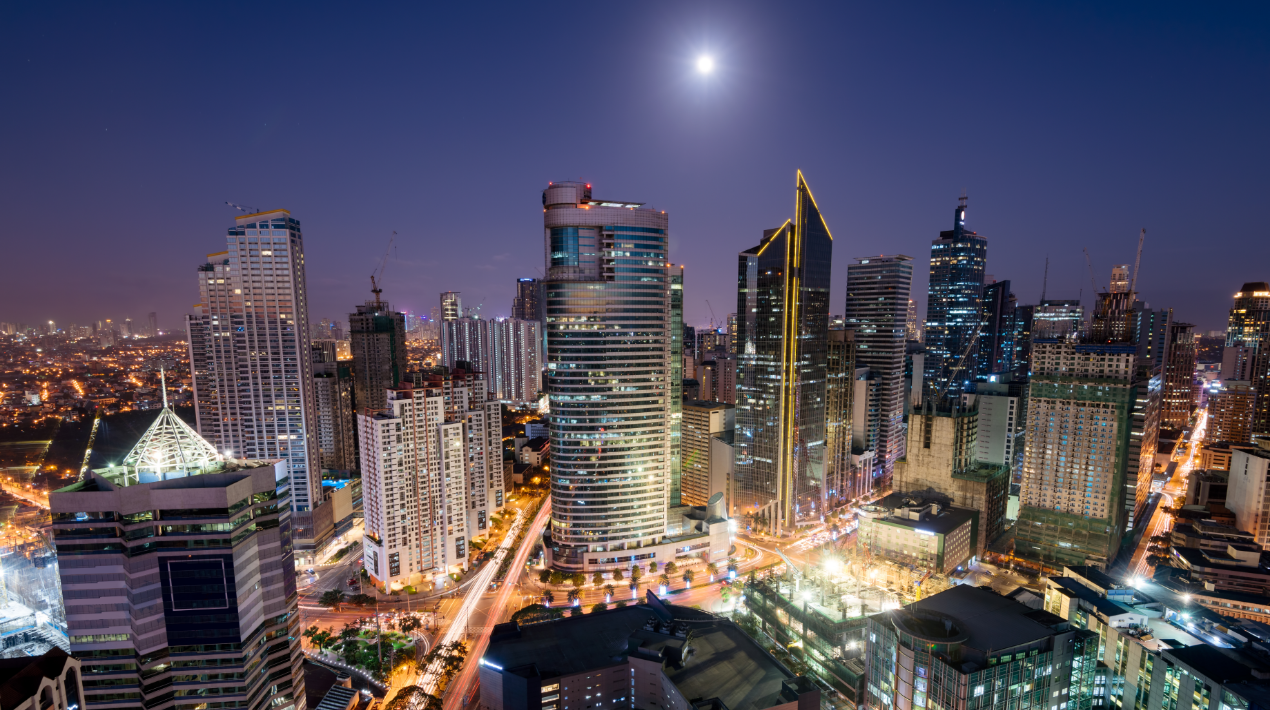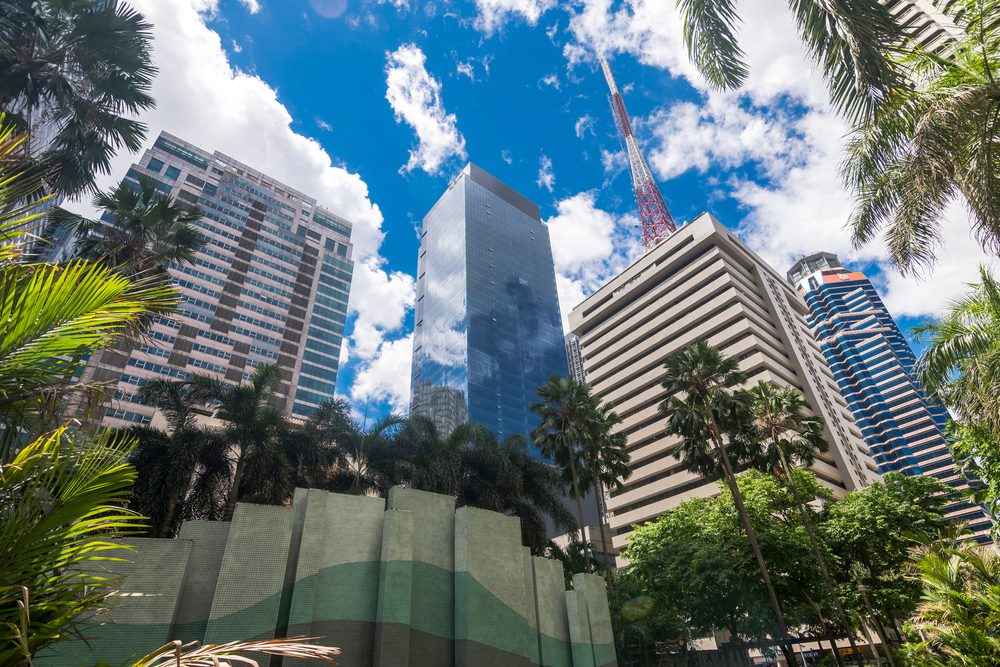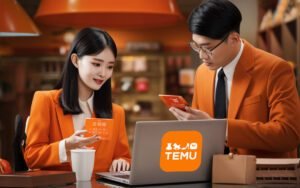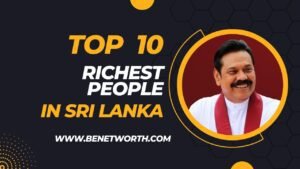As the Philippines’ economy continues to grow and evolve, several cities are emerging as critical players in wealth and development. In fact, according to recent reports, it is estimated that by 2023, certain cities will experience significant growth and become among the richest in the country.
One such city is Makati, which has long been a hub for business and commerce. With its prime location within Metro Manila and world-class infrastructure, Makati is poised for even more success in the coming years. Another city set to experience significant growth is Cebu City, which has already established itself as a major centre for information technology (IT) and business process outsourcing (BPO) industries.
Other cities on this list include Quezon City, Davao City, Taguig City, Pasig City, Parañaque City, Muntinlupa City, Mandaluyong City and Angeles City – all of which have unique characteristics that make them desirable destinations for investors and entrepreneurs alike. With their strong economic performance over the years and strategic positioning within critical regions across the country – these cities are set to boost further Philippines’s position as a leader in Southeast Asia’s economic landscape.
This article explores the top 10 most prosperous cities in the Philippines in 2023. The Philippines is a rapidly developing country; its cities are at the forefront of this growth. These cities are known for their economic opportunities, high quality of life, and rich cultural heritage. We will look closer at these cities, including their area, population, and famous places to visit. By the end of this article, you will better understand the top 10 wealthiest cities in the Philippines and what makes them unique.
Summary of the Top 10 Richest City in the Philippines in 2023
| City Name | Area (km²) | Population (as of 2020) | Famous Places |
|---|---|---|---|
| Makati | 21.57 | 583,281 | Ayala Triangle Park, Greenbelt Mall, Makati CBD |
| Quezon City | 166.2 | 3,126,441 | Quezon Memorial Circle, UP Diliman, Maginhawa |
| Pasig | 31 | 807,192 | Kapitolyo, Tiendesitas, Pasig River |
| Manila | 42.88 | 1,780,148 | Intramuros, Rizal Park, Manila Baywalk |
| Zamboanga | 1,414.70 | 978,859 | Pasonanca Park, Merloquet Falls, Fort Pilar |
| Cebu | 315 | 922,611 | Magellan's Cross, Santo Niño Basilica, Taoist Temple |
| Caloocan | 53.33 | 1,583,978 | Bonifacio Monument, Tala Leprosarium, San Roque Cathedral |
| Marikina | 21.52 | 486,206 | Marikina Sports Center, Marikina River Park, Our Lady of the Abandoned Church |
| Calamba | 149.5 | 454,486 | Rizal Shrine, Calamba Church, Hot Spring Resorts |
| Cagayan de Oro | 488.87 | 728,432 | Mapawa Nature Park, St. Augustine Cathedral, Museo de Oro |
Top 10 Richest Cities in the Philippines
1. Mkati city
Makati is considered the financial centre of the Philippines, with numerous multinational companies and financial institutions headquartered in the city. It is located in the Metro Manila region of the country, with a total land area of 27.36 square kilometres.
As of the latest census conducted in 2020, the population of Makati stands at 601,893. The city has a highly urbanized population density of 22,000 per square kilometre. Makati is known for its upscale residential neighbourhoods, shopping centres, and entertainment districts.
Makati is governed by a local government unit headed by the Mayor, responsible for the city’s management and development. The city has a diverse economy, with a significant portion of its workforce in the service sector. In addition to being the country’s financial hub, Makati is also a centre for real estate, tourism, and cultural activities.
One of the most prominent landmarks in Makati is the Ayala Triangle Gardens, a 2-hectare park located at the heart of the central business district. The park is known for its landscaped gardens, fountains, and sculptures, making it a popular spot for leisure and recreational activities. Makati is also home to several shopping malls, including Ayala Center, which features high-end retail brands, dining options, and entertainment centres.
Regarding transportation, Makati is connected to other cities in Metro Manila through several major highways, including the South Luzon Expressway and Epifanio de los Santos Avenue (EDSA). The city also has its public transportation system, with buses and jeepneys providing transport services within and outside the city.
Makati is a bustling metropolis with a dynamic mix of business, leisure, and cultural activities. With its strategic location, diverse economy, and modern infrastructure, Makati is poised to remain one of the top cities in the Philippines for years to come.
2. Quezon City
Quezon City is one of the most populated cities in the western Philippines. Located in the National Capital Region (NCR), it is the largest city in terms of land area, covering 166.2 square kilometres.
As of the latest census conducted in 2020, Quezon City has a population of 2.96 million people, making it the most populous city in the Philippines. The city has a diverse population, with various ethnic and linguistic groups residing within its borders. The predominant language spoken in Quezon City is Filipino, the Philippines’ national language.
Quezon City is home to many important government institutions, including the Batasang Pambansa Complex, which serves as the headquarters of the Philippine House of Representatives. It also hosts several major universities, such as the University of the Philippines Diliman, Ateneo de Manila University, and Miriam College.
Aside from being a centre for government and education, Quezon City is also known for its vibrant culture and entertainment scene. The city has several popular malls and commercial centres, such as the Ayala Fairview Terraces, Trinoma, and SM City North EDSA. These malls offer many shopping, dining, and entertainment options for locals and tourists alike.
One of the most iconic landmarks in Quezon City is the Quezon Memorial Circle, a tribute to the city’s namesake, former Philippine President Manuel Quezon. The circle features a large monument of the president and several museums and parks.
Overall, Quezon City is a thriving and bustling metropolis that offers a unique blend of history, culture, and modernity. Its large population and diverse community make it a hub for economic and social activity in the Philippines.
3. Pasig City
Cebu is a province in the Visayas region of the Philippines, located in the central part of the country. It is composed of the main island and 167 smaller islands and islets. Cebu is a highly urbanized province known for its rich culture, historical landmarks, and beautiful beaches.
The total land area of Cebu is approximately 4,944 square kilometres, with a population of around 4.6 million as of 2021. The province comprises 44 municipalities and six component cities, including the highly urbanized cities of Cebu City, Mandaue, and Lapu-Lapu. Cebu City is the largest city in the province and serves as the centre of commerce, trade, and industry.
Cebu is famous for its historical landmarks, such as Magellan’s Cross, which is believed to have been planted by the Portuguese explorer Ferdinand Magellan in 1521. It is also home to the Basilica del Sto. Niño houses the country’s oldest religious relic, the Sto. Niño de Cebu. The province is also known for its stunning beaches, such as Moalboal, Bantayan Island, and Malapascua Island, which attract local and international tourists.
Aside from tourism, Cebu is also known for its furniture, fashion accessories, and processed food exports. The province is a significant player in the country’s export industry and has a vibrant business environment. Cebu also has a thriving BPO (Business Process Outsourcing) industry, with many international companies operating in the province.
Cebu has a rich history, vibrant culture, and booming economy. Its diverse attractions and business opportunities make it a top destination for travellers and investors.
Read also: The Top 10 Richest People in the Philippines 2023 | A Glimpse into Their Success
7. Caloocan
Caloocan is one of the highly urbanized cities in the Philippines, located in the northern part of Metro Manila. It has a land area of 53.33 square kilometres and a population of around 1.6 million people as of 2023, making it the fourth most populous city in the country. Caloocan is also known for its rich history, culture, and heritage.
The city is divided into two congressional districts, with 188 barangays or neighbourhoods. The northern part of Caloocan is primarily residential, while the southern part is highly industrialized. The city has been experiencing rapid urbanization and development, with several commercial centres, malls, and high-rise buildings being built in recent years.
Caloocan is known for its many landmarks and tourist destinations. One of the most popular is the Bonifacio Monument, located at the centre of Caloocan City. This monument commemorates the life and works of Andres Bonifacio, one of the country’s most prominent national heroes. Another notable landmark is the Caloocan City Hall, one of the country’s oldest city halls, dating back to the early 1900s.
Regarding culture and heritage, Caloocan is home to several historical churches and sites. One of the most prominent is the Barasoain Church, located in the neighbouring city of Malolos, Bulacan. This church played a significant role in the country’s history, serving as the site of drafting the Malolos Constitution, which established the First Philippine Republic in 1899.
Caloocan also has several notable schools and universities, including the University of Caloocan City, a state university offering a wide range of undergraduate and graduate programs. The city also has several public and private hospitals, including the Caloocan City Medical Center, which provides medical services to the city’s residents.
Overall, Caloocan is a bustling and vibrant city with many urban and cultural experiences. Its rich history, cultural landmarks, and tourist destinations make it popular for locals and tourists alike. With its continued development and progress, Caloocan is poised to become one of the leading cities in the Philippines.
8. Marikina City

















+ There are no comments
Add yours